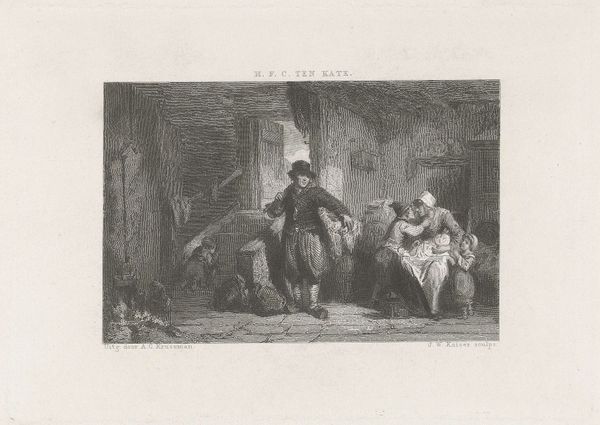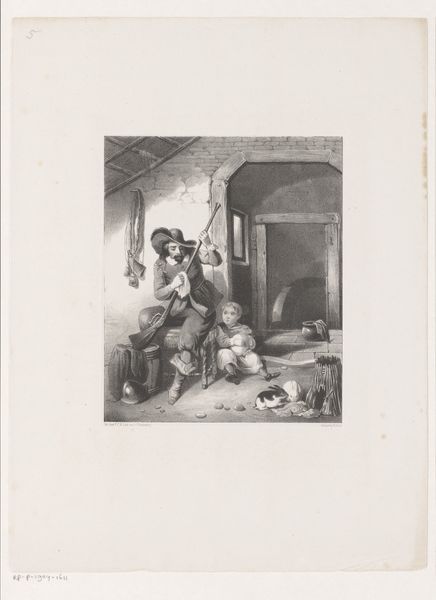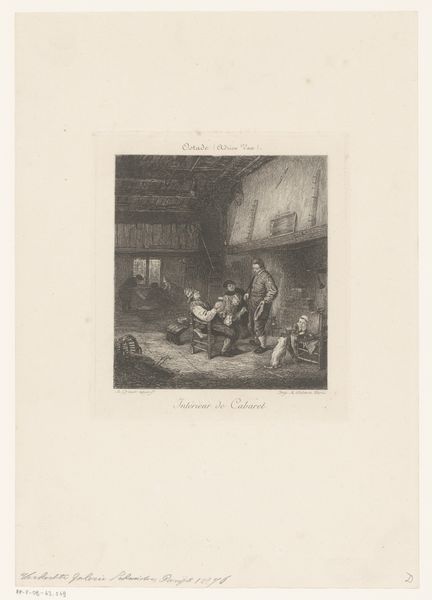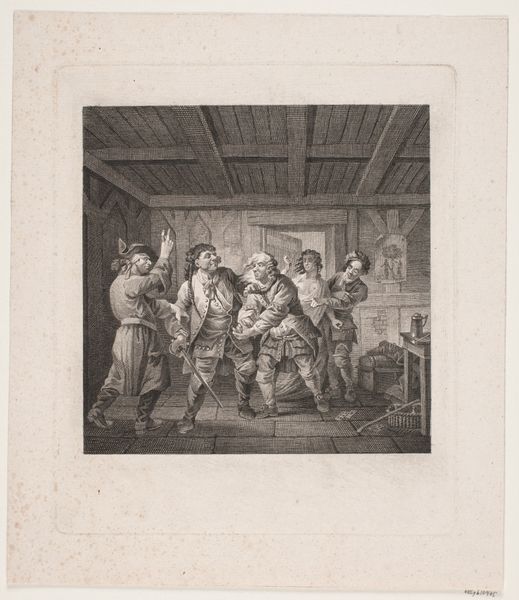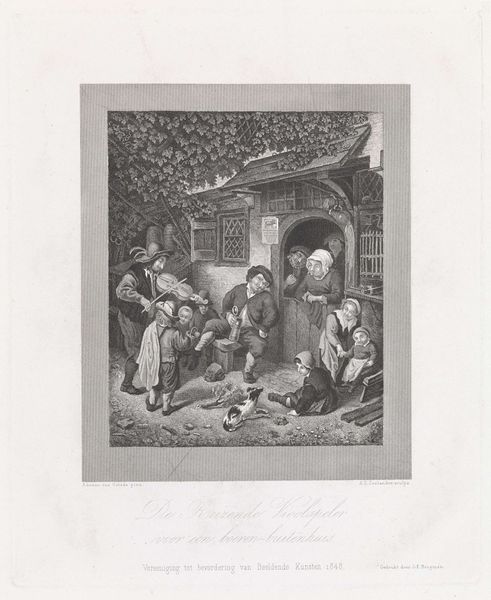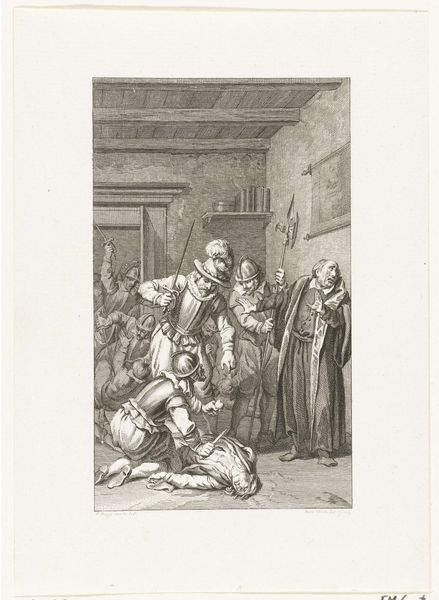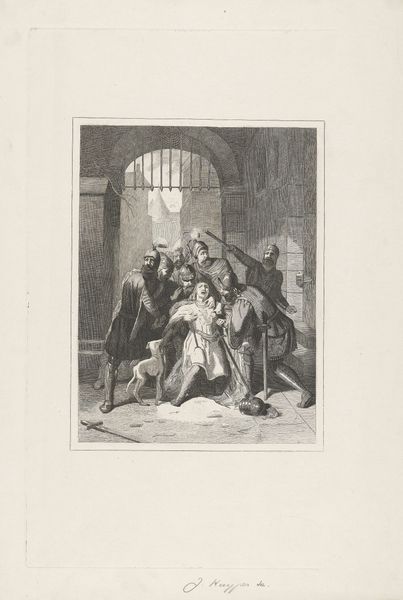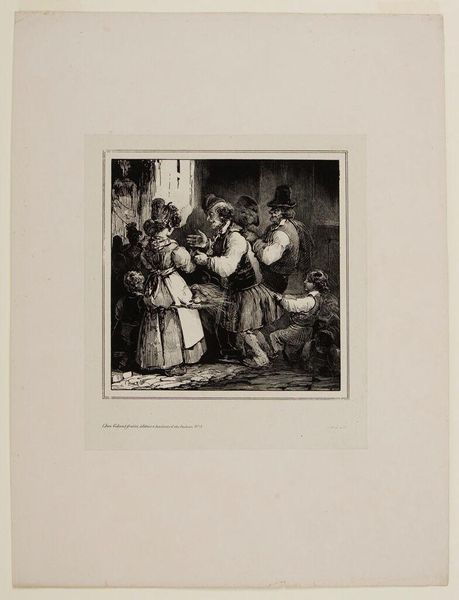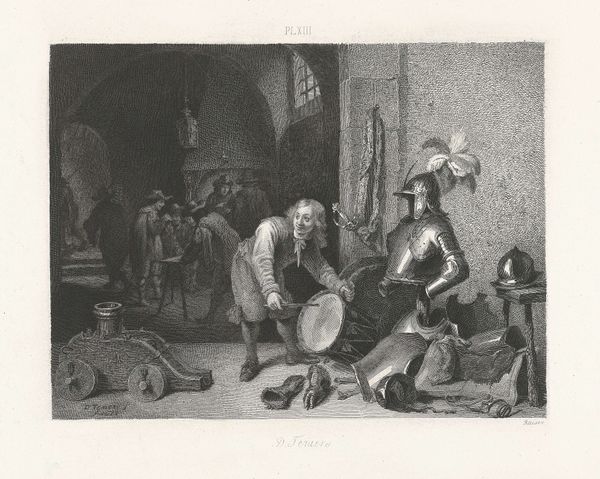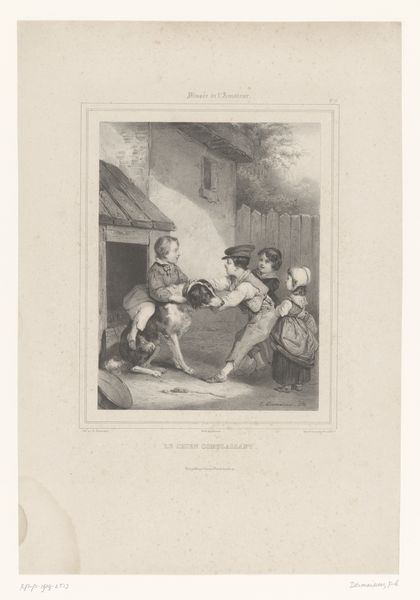
print, etching
#
narrative-art
#
dutch-golden-age
# print
#
etching
#
light coloured
#
old engraving style
#
limited contrast and shading
#
genre-painting
#
realism
Dimensions: height 265 mm, width 355 mm
Copyright: Rijks Museum: Open Domain
Curator: This etching, crafted between 1867 and 1874 by Anthony Cornelis Cramer, is titled "Stroper aangehouden door boswachter"—"Poacher apprehended by a forester." It's part of the Rijksmuseum collection, offering a glimpse into 19th-century Dutch life. Editor: My immediate impression is the sense of disruption amidst everyday life. The scene seems almost theatrical, frozen between action and reaction. It's rendered with a softness, but the narrative feels quite charged. Curator: Exactly. Genre scenes like this are interesting because they depict the collision between rural custom and state control. The poacher, traditionally a figure of peasant resistance, is caught. We can read it through lenses of class struggle, the tension between individual rights and the law. It speaks to anxieties about land use, resource ownership, and the very definition of "property" during the era. Editor: And look at the layering of symbols here. We see domestic animals—a dog, some fowl—scattered around, which suggests a pastoral, perhaps nostalgic element, yet it's interrupted by the figures of authority holding the alleged criminal. Then there’s the barrel—perhaps indicating some illicit brewing—or hunting and poaching taking place when it shouldn't. Even the light plays into the symbolism: areas of shadow and areas where figures emerge. It gives this feeling of exposure and shame. Curator: Right. It's important to consider that the visual language here perpetuates specific societal roles and biases, such as criminalization of impoverished peasants or ideas around how authorities operated. How are the visual shorthands, like clothing, setting, or light effects used? These artistic choices shape a particular understanding of class, morality, and justice. Editor: I am so taken with the image of the mother watching from the upper-story window. Are we seeing a glimpse into private lives of concern for each other? It lends such emotional complexity, don't you agree? There's anxiety there—and perhaps, recognition that rules are being imposed that might have once been much less rigid. It shows how individuals adapt when things change at societal levels. Curator: Absolutely. The poacher becomes a figure emblematic of resistance. He becomes entangled in debates about authority, private versus common land. A humble etching such as this prompts larger interrogations about power dynamics and who determines justice. Editor: So, while seemingly a simple scene, the symbolic richness allows viewers to contemplate issues about humanity and nature, and its intersection with law. Curator: A fascinating print through which to ponder how shifting power relations and societal transformation affect marginalized communities.
Comments
No comments
Be the first to comment and join the conversation on the ultimate creative platform.
